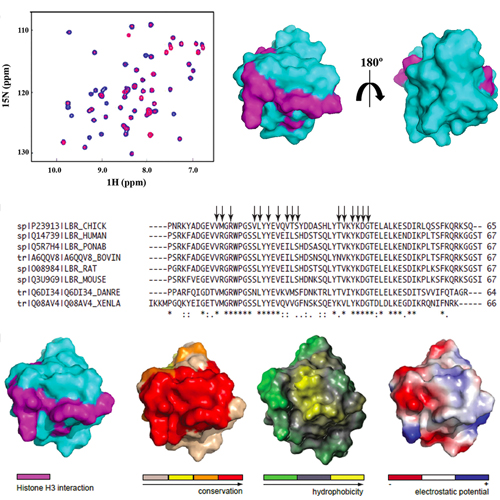Solution Structure and Molecular Interactions of Lamin B Receptor Tudor Domain
06-Jan-2012
The Journal of Biological Chemistry, 2012, VOL. 287, NO. 2, DOI 10.1074/jbc.M111.281303, pp. 1032–1042 published on 06.01.2012
Lamin B receptor (LBR) is a polytopic protein of the nuclear envelope thought to connect the inner nuclear membrane with the underlying nuclear lamina and peripheral heterochromatin. To better understand the function of this protein, we have examined in detail its nucleoplasmic region, which is predicted to harbor a Tudor domain (LBR-TD). Structural analysis by multidimensional NMR spectroscopy establishes that LBR-TD indeed adopts a classical beta-barrel Tudor fold in solution, which, however, features an incomplete aromatic cage. Removal of LBR-TD renders LBR more mobile at the plane of the nuclear envelope, but the isolated module does not bind to nuclear lamins, heterochromatin proteins (MeCP2), and nucleosomes, nor does it associate with methylated Arg/Lys residues through its aromatic cage. Instead, LBR-TD exhibits tight and stoichiometric binding to the “histone-fold” region of unassembled, free histone H3, suggesting an interesting role in histone assembly. Consistent with such a role, robust binding to native nucleosomes is observed whenLBR-TDis extended toward its carboxyl terminus, to include an area rich in Ser-Arg residues. The Ser-Arg region, alone or in combination with LBR-TD, binds both unassembled and assembled H3/H4 histones, suggesting that the TD/RS interface may operate as a “histone chaperone-like platform.











